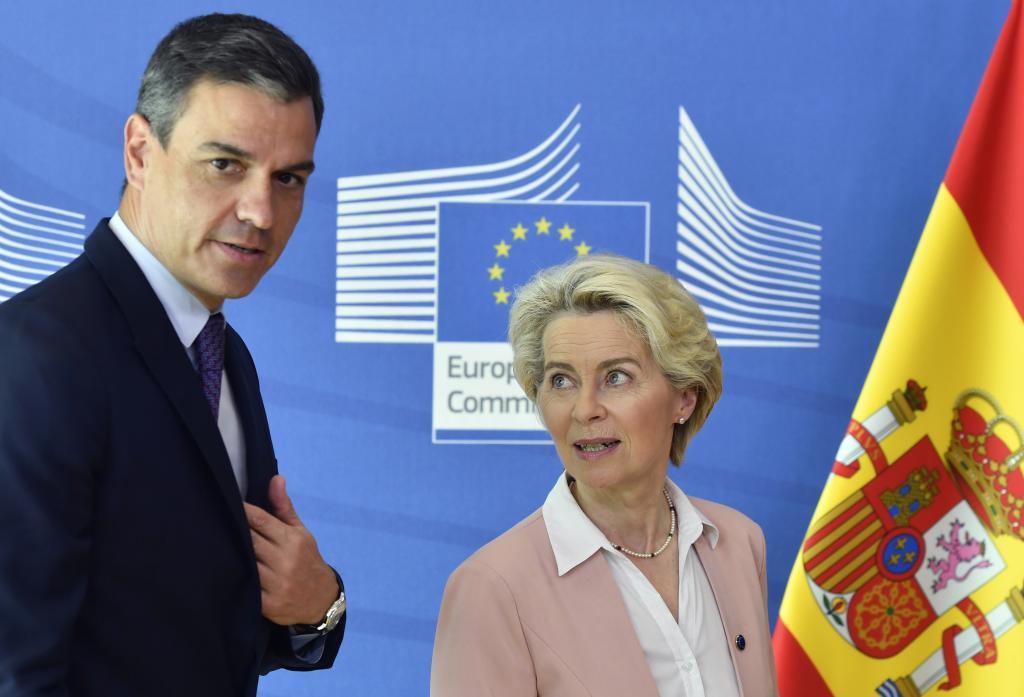Andrius Kubilius (Vilnius, 1956) is directly responsible for Preserving Peace: Roadmap for Defense Preparedness 2030, the plan presented by Brussels yesterday to address the real and growing threat posed by Russia. "To [Vladimir] Putin's plans," summarizes the European Commissioner for Defense and Space in an interview with EL MUNDO and a group of European media. In that meeting, he emphasizes that the Russian threat falls on the entire EU, and that Spain could also be the target of, for example, a provocation or even a drone attack.
During the interview, Kubilius repeatedly mentions this threat: the one coming from the sea. "Drones can come not only through Ukraine towards the countries of the eastern flank but can be launched from any point. From ships, of course," he points out.
And he delves deeper: "Most countries have the problem of drone detection. The systems that Member States currently have are good for tracking aircraft or missiles, but drones are small and fly low, and many countries do not have the capabilities to detect and track them. We also need cost-effective means to destroy drones, not always by firing a missile. And there are countries making progress. For example, I was recently in Latvia, and they are advancing in building an acoustic sensor system for detection."
Therefore, and due to the need to address drones used in "modern warfare," one of the four "flagship projects" included in the roadmap of the Commission is the construction of the drone wall or European Defense Initiative against Drones, which is how Brussels has renamed the initiative to show that it goes beyond the eastern flank. The other three are a program, in this case, specific to the area geographically closest to Russia, and the air and space shield.
"The roadmap is a megaplan," Kubilius continues, which will be financed with the "explosion in Defense funding" that will occur in Europe in the coming years. "By 2035, in the EU as a whole, we will invest 6.8 trillion euros. Of that amount, half, around 3.4 trillion euros, will be allocated to actual Defense, that is, effective military spending," he noted.
This figure, which is indeed very substantial, responds "basically to the calculation of what will be needed to meet NATO's objective over ten years." Because both the Commissioner and the Commission base their estimates and the entire plan on the fact that all EU countries will meet the spending target agreed with the Alliance: 5% of GDP in that year 2035 under the 3.5%+1.5% format. And Kubilius is very clear that ultimately, all that money comes from the same place: "Taxpayers' pockets."
To conclude the meeting, the EU's Defense and Space Commissioner addresses two somewhat thorny issues: how this plan fits with NATO and with the fact that security is a national matter. "We do not compete with NATO, we provide our added value. This roadmap is precisely that, a demonstration of our added value. NATO and the Member States decide on Defense military plans and capability objectives," he responds.
"We do not regulate Member States. The Commission will act as a facilitator, providing a one-stop service to provide technical assistance and advice to Member States on how to link national actions with their available funding tools and opportunities, including regional funds, while ensuring coherence and continuity among the different lines of work," he concludes, reading directly from the document he presented yesterday alongside the EU's High Representative for Foreign Affairs, Kaja Kallas, and Vice President Henna Virkkunen.
